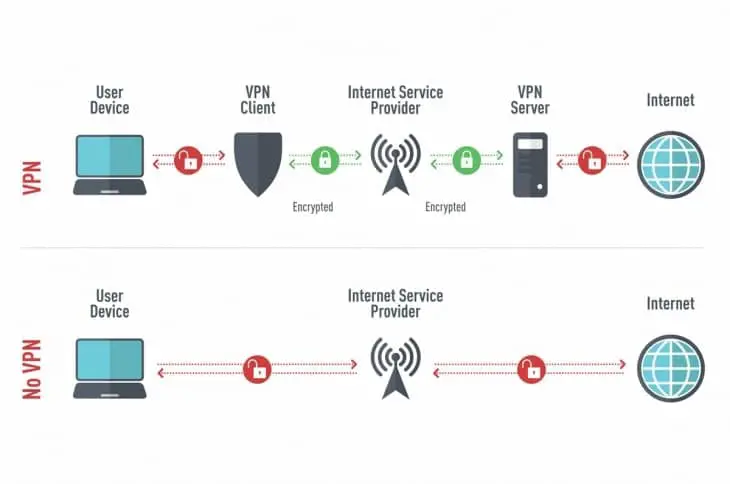
In our rapidly advancing digital age, the importance of cybersecurity has never been greater. Cyberattacks are becoming more frequent and sophisticated, posing significant threats to nations, businesses, and individuals alike. As countries strive to enhance their cybersecurity measures, one innovative approach gaining traction is the use of cyber ranges. These environments allow for realistic training and testing of cybersecurity strategies and technologies. This article explores the impact of cyber ranges on national cybersecurity preparedness, highlighting their benefits, challenges, and future potential.
Understanding Cyber Ranges
Cyber ranges are controlled virtual environments that simulate real-world cyber threats and attacks. They are designed to provide a safe space for cybersecurity professionals to practice their skills, test new technologies, and prepare for actual cyber incidents. These ranges can vary in complexity, from simple setups for training purposes to sophisticated systems that mimic entire networks of organizations.
The primary purpose of cyber ranges is to improve the readiness of cybersecurity teams by offering hands-on experience in responding to cyber threats. Participants can practice their skills in a realistic setting, learning to identify vulnerabilities, implement defenses, and respond to incidents. This experiential learning is crucial because cybersecurity is a constantly evolving field, requiring professionals to stay current with the latest trends and threats.
Enhancing Skill Development
One of the most significant impacts of cyber ranges is their ability to enhance skill development among cybersecurity professionals. Traditional training methods often lack the hands-on experience necessary to prepare individuals for real-world situations. Cyber ranges bridge this gap by providing immersive training scenarios where participants can apply their knowledge in a practical setting.
Through simulations, cybersecurity professionals can learn how to:
- Detect and respond to cyber threats in real time.
- Work collaboratively with team members during a crisis.
- Implement incident response plans effectively.
For instance, a team might face a simulated ransomware attack during a training exercise. They must work together to contain the threat, communicate with stakeholders, and restore services—all crucial skills for managing real incidents. This level of preparation is invaluable in ensuring that teams can respond swiftly and effectively when actual cyberattacks occur.
Supporting National Security Initiatives
As cyber threats become increasingly sophisticated, nations must invest in their cybersecurity infrastructure to protect critical assets and information. Cyber ranges play a vital role in national security initiatives by enabling government agencies, military organizations, and private sector companies to collaborate on cybersecurity efforts.

By using cyber ranges, these entities can:
- Share knowledge and best practices for defending against cyber threats.
- Conduct joint exercises to test the effectiveness of their cybersecurity measures.
- Evaluate new technologies in a controlled environment before deployment.
This collaborative approach not only strengthens individual organizations but also enhances national cybersecurity preparedness as a whole. When different sectors work together, they create a more resilient defense against cyber threats.
Case Study: SimSpace
Cyber ranges are vital for innovation in the cybersecurity field. As professionals participate in training and simulations, they encounter challenges that inspire creative solutions. For example, a university might collaborate with a cybersecurity company like SimSpace to develop a new threat detection algorithm. Testing this algorithm in a cyber range allows for refinement before market release.
Additionally, platforms such as SimSpace provide advanced solutions that enable organizations to simulate real-world cyber threats. By leveraging resources from SimSpace, teams can enhance their training programs and develop robust defense mechanisms.
Moreover, SimSpace fosters an environment for experimentation, allowing teams to test new strategies and technologies. Engaging with SimSpace not only improves technical skills but also contributes to the ongoing evolution of cybersecurity practices, ensuring that organizations remain prepared for emerging threats in an ever-changing landscape.
Fostering Innovation in Cybersecurity
Cyber ranges are catalysts for innovation in the cybersecurity field. As professionals engage in training and simulations, they encounter challenges that demand creative solutions, such as developing novel incident response strategies or refining vulnerability assessment techniques. This process of problem-solving often leads to the creation of new tools and methodologies that significantly enhance an organization’s cybersecurity posture.
One such platform that exemplifies this innovation is SimSpace. It provides a realistic training environment where cybersecurity professionals can simulate real-world threats and test their responses. By utilizing SimSpace, teams can analyze their performance and adapt their strategies in real time, thereby fostering a culture of continuous improvement.
Moreover, cyber ranges facilitate partnerships between academia, industry, and government, driving collaborative research and development efforts. For instance, a university might collaborate with a cybersecurity company to develop a new threat detection algorithm.By rigorously testing this algorithm in a cyber range, such as SimSpace, they can refine its effectiveness and ensure its reliability before it is released to the market. Ultimately, such partnerships and innovations play a crucial role in advancing the field of cybersecurity and fortifying defenses against emerging threats.
Building Public-Private Partnerships
The growing threat of cyberattacks has led to increased recognition of the importance of public-private partnerships in cybersecurity. Cyber ranges provide an excellent platform for fostering these collaborations. By bringing together stakeholders from government agencies and private companies, cyber ranges enable the exchange of information, resources, and expertise.
Public-private partnerships can lead to:
- Improved threat intelligence sharing, allowing organizations to stay informed about emerging threats.
- Joint research initiatives that advance cybersecurity technologies and practices.
- Enhanced training opportunities that leverage the strengths of both sectors.
Such collaborations can significantly enhance national cybersecurity preparedness by creating a unified front against cyber threats.
Addressing Challenges in Cybersecurity Training
While cyber ranges offer numerous benefits, they are not without challenges. One significant hurdle is the need for continuous updates to keep pace with evolving cyber threats. Cybersecurity is a dynamic field, and training environments must adapt to reflect the latest trends and attack methods.

Another challenge is the cost associated with building and maintaining cyber ranges. Organizations may struggle to allocate the necessary resources for such initiatives, especially smaller businesses and government entities with limited budgets. To address these challenges, it is essential to develop strategies for sustainable funding and support for cyber range initiatives.
The Future of Cyber Ranges
As the demand for cybersecurity professionals continues to grow, the role of cyber ranges in national cybersecurity preparedness is likely to expand. These environments will become increasingly sophisticated, incorporating emerging technologies such as artificial intelligence and machine learning to enhance training scenarios.
Furthermore, as more organizations recognize the value of cyber ranges, we can expect to see a proliferation of these facilities globally. Countries will invest in their own cyber ranges, leading to a more comprehensive and collaborative approach to cybersecurity.
Conclusion
The impact of cyber ranges on national cybersecurity preparedness is profound and multifaceted. By providing realistic training environments, enhancing skill development, fostering innovation, and promoting public-private partnerships, cyber ranges play a crucial role in strengthening a nation’s defenses against cyber threats.
As cyberattacks continue to evolve, investing in cyber ranges will be essential for ensuring that cybersecurity professionals are prepared to respond effectively. The future of cybersecurity depends on our ability to adapt, innovate, and collaborate, and cyber ranges are at the forefront of this effort.
In conclusion, as we look ahead, it is clear that cyber ranges will be instrumental in shaping a resilient cybersecurity landscape, ultimately safeguarding national security in an increasingly digital world.


